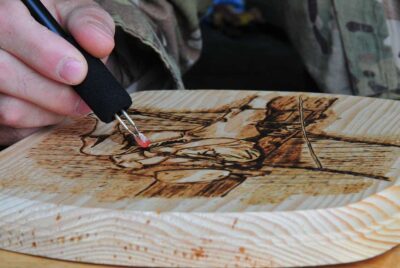Woodworking Bench Height and Dimensions: Find the Ideal Fit for Your Workspace
Let’s talk about the heart of any woodworking shop—the woodworking bench. If you’ve ever struggled with back pain after a long project or felt like your workspace was too cramped, chances are your bench’s height or dimensions weren’t ideal. Finding the right fit isn’t just about comfort—it’s about efficiency and precision too. So, let’s explore how to get your woodworking bench just right.
Why Bench Height and Dimensions Matter for Woodworking
Why does bench height even matter? Well, think about it: your bench is where the magic happens. Whether you’re planing, sanding, or assembling, the wrong height can make every task feel like a chore. You don’t want to be hunched over or reaching too high, right? The dimensions of your woodworking bench also play a key role in how well your workspace flows. Too big, and it’s cumbersome; too small, and you’re out of room before you even start. Getting the right dimensions means smoother work and less frustration.
How to Choose the Perfect Bench Height
When it comes to choosing the perfect bench height for your woodworking bench, it’s all about finding the balance between comfort and functionality. The height affects how easy it is to work on your projects without straining your body. It’s like picking the perfect pair of shoes: if they don’t fit right, it can make the whole experience uncomfortable.
Standard Heights for Different Work Types
Generally, woodworking benches fall into three height categories:
- Planing and Handwork: Lower benches (28–32 inches) give you the leverage needed for tasks like planing. This height lets you get up close to your work and apply force with ease.
- General Woodworking: A mid-range height (33–36 inches) works well for most tasks, allowing you to stay comfortable while doing everything from sanding to assembling.
- Detail Work: Higher benches (37–39 inches) are perfect for carving or intricate joinery. These heights help you work with precision and avoid hunching over.
No matter your project type, finding the right height for your woodworking bench makes a big difference in efficiency and comfort.
Factors to Consider When Deciding on Height
When deciding on the height of your woodworking bench, there are a few fun factors to keep in mind! First, think about your comfort—your arms should hang naturally when standing. Then, consider the type of projects you work on; larger projects might need a lower bench, while detailed tasks may benefit from a higher one. Lastly, think about the tools you use. Hand tools often do better on lower benches, while machines call for a more mid-range height.
Your Height and Comfort
A good rule of thumb is to stand straight and let your arms hang naturally. Your bench height should align with the crease of your wrist. This ensures that you’re not overexerting yourself, and your body stays relaxed. A comfortable height means fewer aches and better posture throughout the day.
The Type of Projects You Work On
Large, heavy-duty projects might require a lower bench for better leverage, especially when planing or cutting big pieces. Detailed work, on the other hand, benefits from a taller bench that reduces strain on your back and neck. Understanding your typical projects will guide you in choosing the perfect height for your woodworking bench.
Tools and Techniques You Use
If you rely heavily on hand tools, a lower bench might feel more natural for you. On the other hand, if you use a lot of power tools or machines, a mid-range height might work best. Keep in mind that comfort is key, and your techniques will influence the best fit for your needs.
Adjustable Benches: Versatility at Its Best
When Adjustable Benches Make Sense
If your projects vary widely, an adjustable woodworking bench can be a lifesaver. Whether you’re working on large projects one day and fine-detail work the next, being able to adjust your bench height is super convenient. It lets you switch between heights for different tasks, so you’re always working efficiently and comfortably. Adjustable benches bring flexibility and make sure you can tackle anything that comes your way.
Tips for Choosing an Adjustable Bench
When selecting an adjustable woodworking bench, look for a sturdy frame that can handle the weight of your projects. A smooth height-adjustment mechanism is essential, as you don’t want it to be a hassle to adjust. Also, ensure that the bench locks securely in place once you’ve found the perfect height to avoid wobbling during use. Versatility is great, but stability is even better!
Ideal Bench Length and Width for Your Workspace
Common Bench Sizes for Various Spaces
Most woodworking benches are 6-8 feet long and 2-3 feet wide. This size provides ample workspace while still fitting into most shops or garages. It’s a good middle ground that gives you enough space to work without taking over your entire room. Depending on your space, you can tweak the dimensions to suit your needs!
How to Maximize Space Without Sacrificing Functionality
If you’re tight on space, you can still make the most of your woodworking bench by considering a few adjustments. Adding foldable extensions can give you extra room when needed, but when you’re done, it doesn’t take up extra space. Opting for a narrower bench or multi-functional workbenches with built-in storage can also help maximize your workspace without sacrificing functionality.
Tailoring Bench Dimensions for Small Workspaces
Compact Options for Tight Spaces
For smaller shops, a 4-5 foot woodworking bench might be all you need. It’s smaller, but still gives you plenty of surface area to work on. Adding drawers or shelves underneath is a great way to maximize storage in tight spaces. You can keep your tools organized without cluttering the workspace itself, keeping everything within easy reach.
Multi-Functional Designs to Save Space
When space is at a premium, multi-functional designs are a lifesaver. Consider a woodworking bench that doubles as an assembly table or has built-in tool storage. This way, you’re effectively getting two benches in one, without taking up double the space. Multi-functional designs ensure your shop stays tidy while still giving you all the workspace you need.
Special Considerations for Large Workspaces
Benefits of a Larger Bench
If space isn’t an issue, go big! A larger woodworking bench gives you the freedom to spread out your materials and tools, making larger projects much easier. Having a spacious bench allows you to tackle everything from intricate carpentry to heavy-duty building without feeling cramped. It’s the perfect option if you often work with big pieces or like having everything laid out in front of you.
Layout Tips for Efficiency
Even in a big space, it’s important to position your woodworking bench strategically. Keeping your bench near power outlets, storage, and essential tools reduces unnecessary movement. Create a layout that’s efficient and ensures you can easily access everything you need while staying comfortable as you work.
Ergonomics and Comfort: Why It Matters
Preventing Fatigue During Long Projects
Working at the wrong height can lead to fatigue and even long-term injuries. A well-fitted woodworking bench keeps you comfortable, so you can focus on your craft. Whether you’re sanding for hours or assembling a large project, the right height will help prevent strain on your neck, back, and wrists.
Bench Modifications for Better Posture
If you spend a lot of time at your bench, consider adding modifications to improve your posture. Anti-fatigue mats are great for standing work, and footrests can make a huge difference in relieving pressure from your lower back. Simple adjustments can enhance your comfort and ensure you stay energized throughout the day.
DIY Solutions for Custom Bench Dimensions
Building Your Own Bench: Tools and Materials
Building your own woodworking bench lets you create a workspace tailored to your needs. Start with a solid hardwood top, such as maple or oak, and a sturdy frame. Be sure to pre-drill for dog holes so you can easily secure your projects. DIY benches allow you to customize every detail, from height to storage, creating the perfect workspace for your unique style.
Measuring and Adjusting to Fit Your Needs
Before you start building, measure your ideal height and dimensions. Use boxes or sawhorses to simulate the size and height of your ideal woodworking bench. Adjust until you find the right fit, and then start building! You’ll appreciate how personalized and functional your space becomes once you’ve built it to your exact needs.
Pre-Made vs. DIY: Which Option is Better?
Pros and Cons of Pre-Made Benches
Pre-made benches save time and often come with professional-grade features, but they can be pricey and might not fit your exact needs. If you’re looking for something quick and reliable, a pre-made bench can be a great option. However, if you want something more personalized, a DIY bench might be a better fit.
Why DIY Benches Offer Customization
Building your own woodworking bench lets you choose every detail, from height to storage. Plus, there’s nothing like the satisfaction of working on something you made yourself. It’s a perfect way to create a workspace that suits your exact style and needs.
Maintenance Tips for Long-Lasting Benches
Regular Checks for Stability and Wear
To keep your woodworking bench in great condition, check for loose screws, dents, or wobbling legs. Tightening things up regularly will save you from bigger headaches later on. This little maintenance routine will help your bench stay stable and secure for many projects to come.
Surface Care for Optimal Performance
Clean your woodworking bench after every project to keep it in top shape. Dust and debris can build up, affecting your work, so a quick wipe-down helps. Applying a protective finish will not only keep your bench looking great but also prevent damage from spills or scratches.
Conclusion
Finding the ideal woodworking bench height and dimensions isn’t just about aesthetics—it’s about creating a workspace that works for you. Whether you’re crafting detailed joinery or assembling large projects, the right bench can make all the difference. Take the time to evaluate your needs, test out different setups, and make adjustments as needed. Trust me, your back (and your projects) will thank you!
FAQs
- What is the ideal height for a woodworking bench?
The ideal height depends on your tasks, but a good starting point is the crease of your wrist when standing. - Can I adjust the height of my existing bench?
Yes! You can add risers, adjustable legs, or even build a platform to raise or lower the bench. - How wide should a woodworking bench be?
Most benches are 2-3 feet wide, which offers enough workspace while still being manageable. - What’s the best material for a DIY bench?
Hardwood like maple or oak is ideal for durability, but plywood works well for budget-friendly builds. - How do I maintain my woodworking bench?
Regular cleaning, checking for loose parts, and applying a protective finish will keep your bench in top shape.
For more tips on choosing the perfect woodworking bench height, check out this guide on woodworking bench heights or watch this video about adjustable height woodworking bench design.




